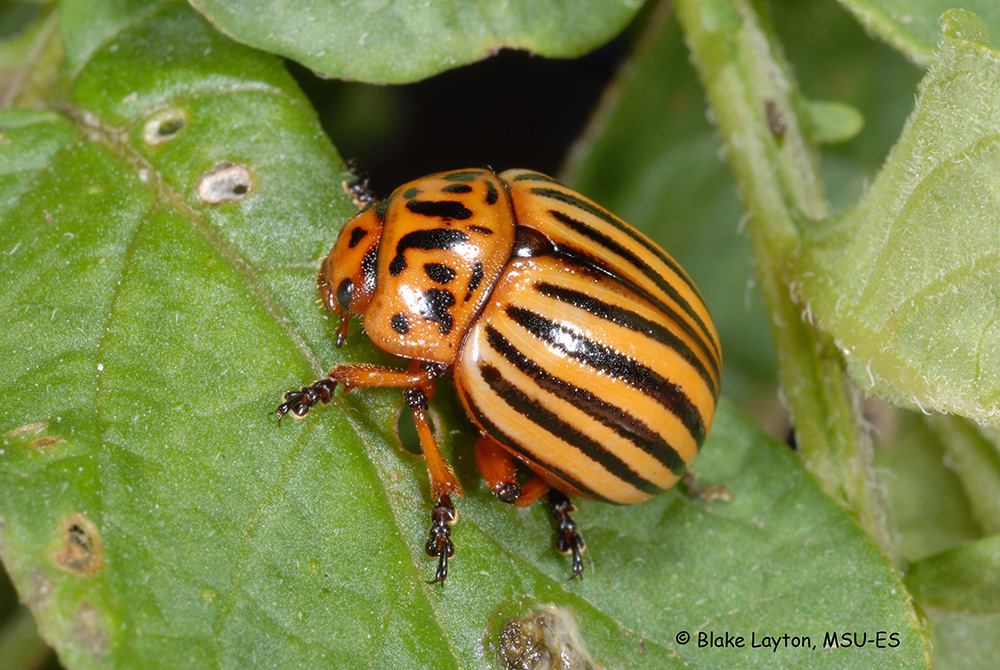Colorado Potato Beetle | Vol. 3, No. 4

Leptinotarsa decimlineata
Order: Coleoptera
Family: Chrysomelidae
You are looking forward to that first mess of new potatoes when you realize that something is eating the leaves. Colorado potato beetles, both the adults and larvae, devour leaves with their chewing mouthparts. Heavy, uncontrolled infestations can cause serious defoliation and greatly reduced yields. Why does feeding on the above ground leaves have such a big effect on growth of the underground tubers? Two of the major elements contained in the tubers, carbon and oxygen, enter the plant through the leaves as CO2. Leaves also collect energy from sunlight and use it, via the process of photosynthesis, to convert CO2 absorbed through the leaves and water taken in by the roots into glucose. This simple sugar provides energy for plant growth and serves as a building block for the other carbohydrates, starches, fats, and proteins that make up the non-water portion of the potato tubers. Fewer leaves equal fewer and/or smaller potatoes.
As the name implies, Colorado potato beetles love potatoes, but they will also feed on other solenaceous vegetables, such as eggplant and tomatoes. In fact, their original host is a native solanaceous plant from the western U.S. called buffalo bur, which is similar to horse nettle (same genus). Potatoes are not native to the U.S. and Colorado potato beetles did not start feeding on potatoes and moving into the eastern U.S. until around 1859.
Adults are easy to identify by their round, convex shape–much like a VW Beetle–and those ten black lines on their backs, which explain the “decimlineata” part of their scientific name. The larvae are also distinctive—fat and red with two rows of black spots along each side. The oblong yellow eggs are laid on the leaves in clusters of a few dozen.
Control: If you only have a few hills of potatoes, you can control potato beetles by hand-picking the adults and larvae from the plants, but you have to start early and be persistent. Otherwise, spray with products that contain spinosad, permethrin, or carbaryl. Spinosad is a great option for organic gardeners. Potatoes can tolerate low levels of defoliation without suffering yield loss, so wait until you have enough insects to make spraying worth the cost and effort, but don’t wait so long that your potatoes have already sustained heavy damage.
See page 5, and pages 12-14 of Extension Publication 2347, Insect Pests of the Home Vegetable Garden for more information.
Blake Layton, Extension Entomology Specialist, Mississippi State University Extension Service.
The information given here is for educational purposes only. Always read and follow current label directions. Specific commercial products are mentioned as examples only and reference to specific products or trade names is made with the understanding that no discrimination is intended to other products that may also be suitable and appropriately labeled.
Sign up to receive Bug's Eye View.

